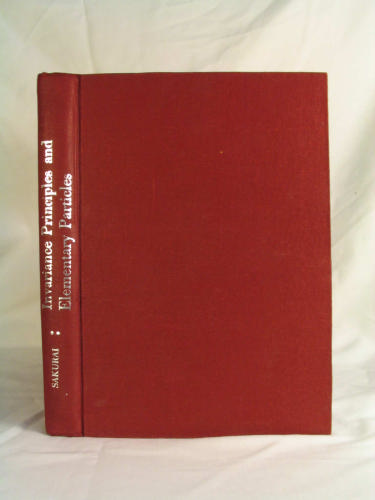Invariance Principles and Elementary Particles ebook
Par dingler jesus le mardi, juin 21 2016, 02:06 - Lien permanent
Invariance Principles and Elementary Particles. Sakurai J.J.

Invariance.Principles.and.Elementary.Particles.pdf
ISBN: 0691079870,9780691079875 | 338 pages | 9 Mb

Invariance Principles and Elementary Particles Sakurai J.J.
Publisher: PUP
Provide the last missing piece in the nearly 40-year-old Standard Model of particle physics. The laws of nature are to underlie explanations of all matter from the domain of elementary particles to that of cosmology. As Einstein surmised decades ago, this will probably require enlarging the symmetry group (i.e., the invariance principles) that governs physics. Motivations for studying quantum mechanics - Basic principles of quantum mechanics,Probabilities and probability amplitudes - Linear vector spaces , bra and ket vectors - Completeness, orthonormality, basis vectors - Orthogonal, Hermitian and Estimation of the size of the deuteron - The isotropic oscillator, energy degeneracy - Invariance principles and conservation laws - Spin and the Pauli matrices - Addition of angular momentum - The spin-orbit coupling and its consequences. No matter how we word the debate, the conclusion is the same: the Higgs field is not, in principle, the universal giver of mass to all the elementary particles of nature. It is the simplest explanation for how the electroweak symmetry was broken in the very early universe, giving mass to elementary particles. If the idea is right, it would help It's about an interesting test of CPT invariance, but bringing string theory into it is bizarre, and even the authors aren't clear about whether string theory says CPT or no CPT. The findings could have implications for superstring theory — the idea that all fundamental particles are actually loops of vibrating string — which is one attempt to unify nature's forces and create a theory of everything. The coupling to the Higgs field is constant. SLAC National Accelerator Laboratory. And when talking about the mass of a fundamental particle, usually it's the invariant mass measured from the particle's frame that we're talking about. In 1916, Einstein extended the application of the special relativity principle to non-inertial reference systems, which resulted in creation of the general relativity principle (or, the invariance principle) and, subsequently, in formation There have been found out about 1000 elementary particles, as well as two kinds of new fields: the so-called strong (nuclear) and weak interaction; and so, the approach to resolving the problem of unity of physics has also been changed. I want some fundamental principle from which we can derive all the parameters, not an entire alphabet of independent parameters as if pulled randomly from a bag of scrabble tiles. Covariance, also called the principle of relativity, that is, the underlying axiom of the theory of relativity.